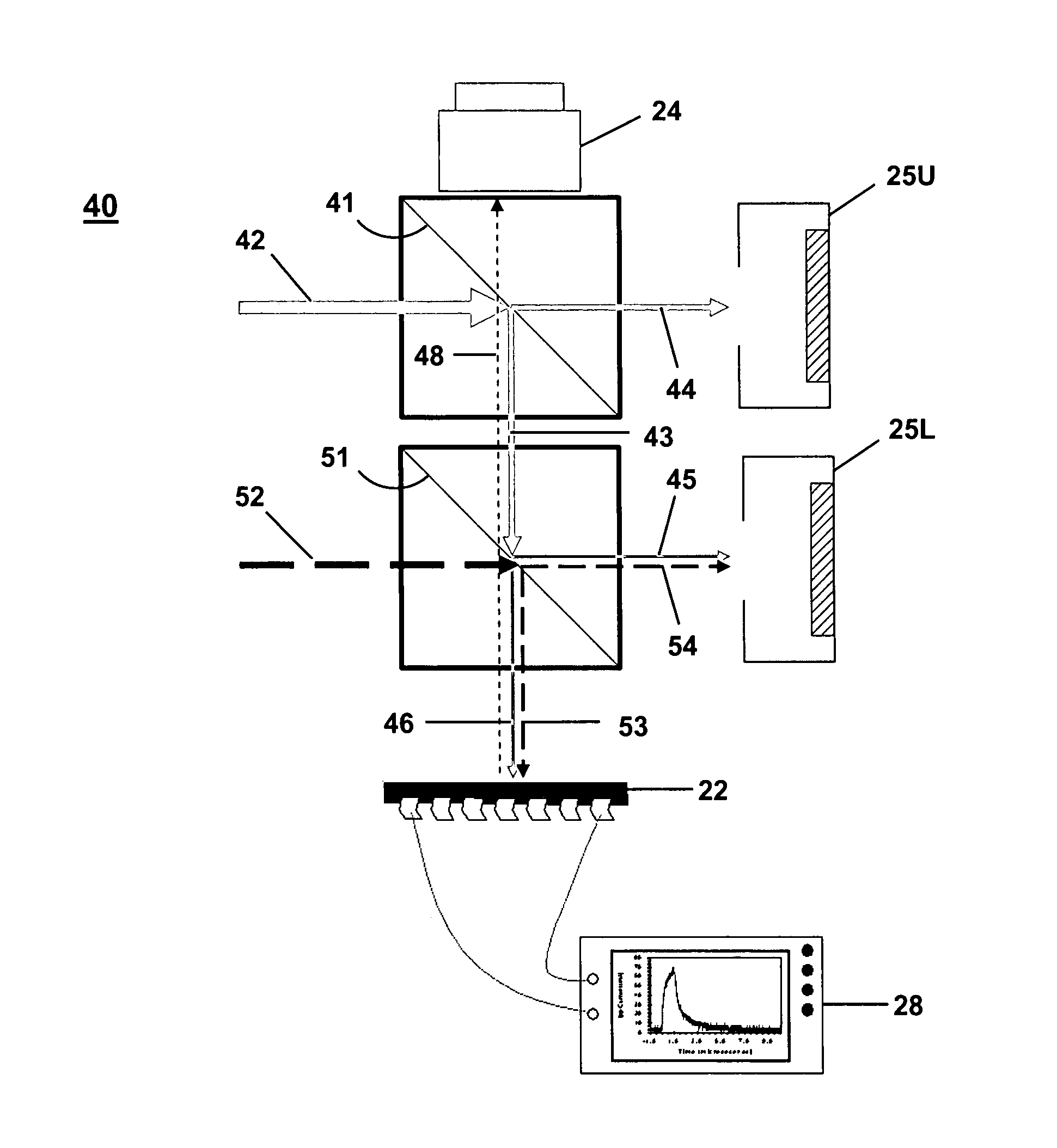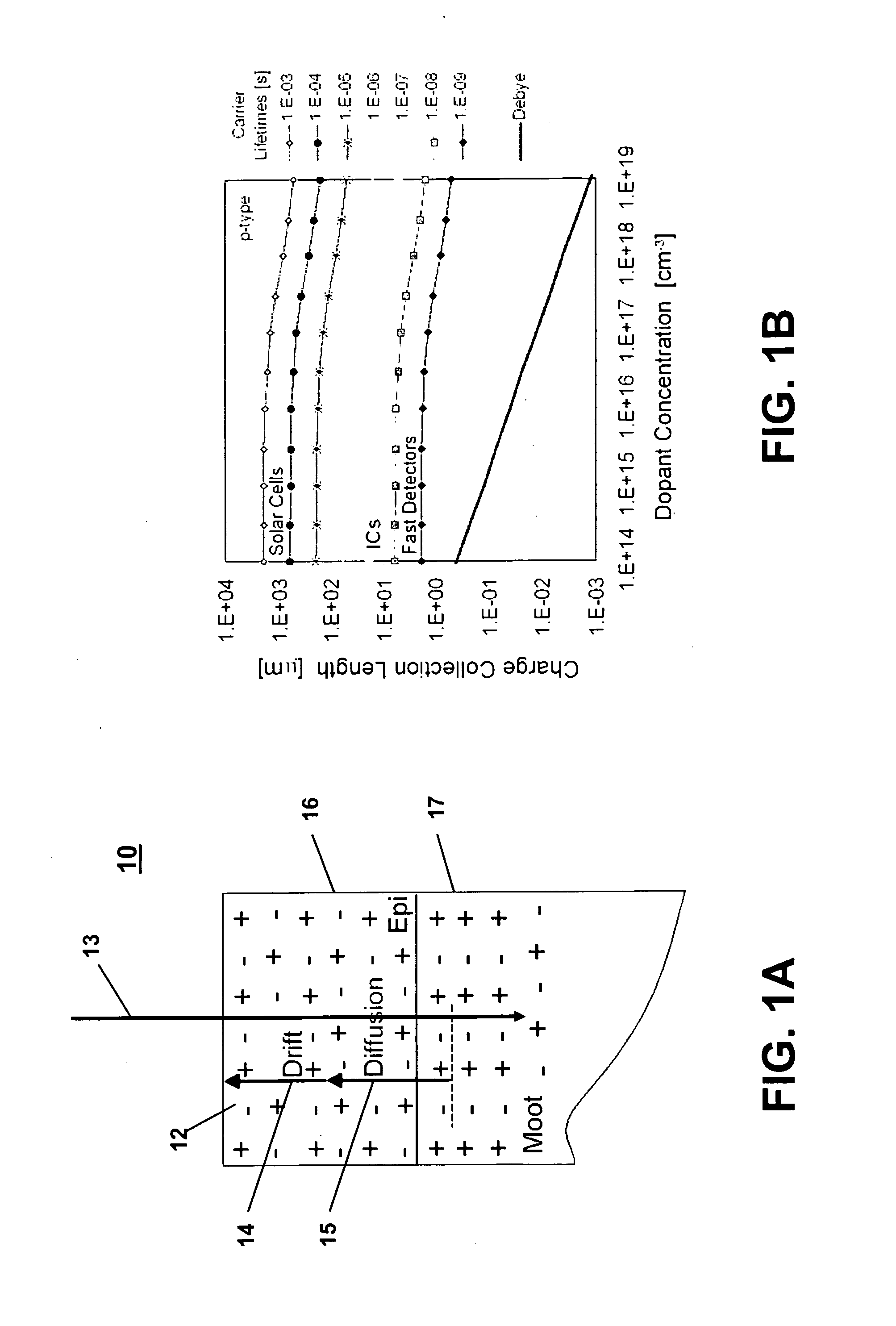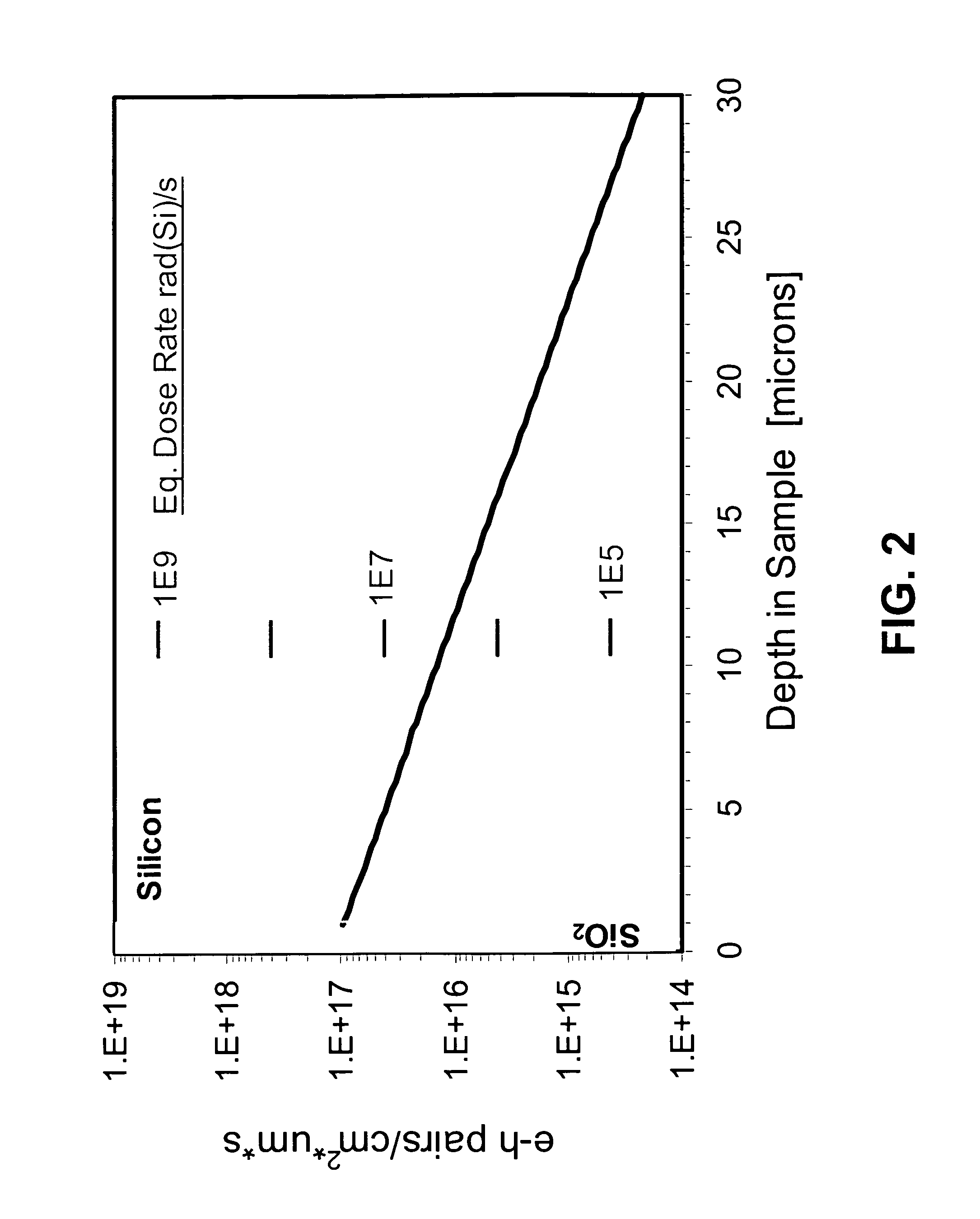Laser-based irradiation apparatus and method to measure the functional dose-rate response of semiconductor devices
a laser-based irradiation and functional technology, applied in the direction of optical radiation measurement, instruments, material analysis, etc., can solve the problems of devices becoming even more sensitive to transient ionizing radiation effects, known deleterious effects on semiconductor devices and circuits, and degrading the performance of electronic devices
- Summary
- Abstract
- Description
- Claims
- Application Information
AI Technical Summary
Benefits of technology
Problems solved by technology
Method used
Image
Examples
embodiment 30
[0038]Using beam splitters, the laser pulse energy, laser beam uniformity, and the position of the semiconductor device within the exposure area of the laser beam can be simultaneously measured during each exposure of a sequence of exposures. In FIG. 5A is shown an embodiment 30 in which a beam splitter 31 is employed to transmit a fixed fraction 33 of the incident laser beam 32 toward the DUT 22, while the remainder 34 of the beam 32 is reflected onto the energy detector 25. The beam splitter 31 is selected so as to: (1) match the wavelength of the laser light source, (2) accommodate the heat loads from energy deposition in the beam splitter by the laser pulses, (3) accommodate the lateral size of the laser beam, and (4) provide the desired fractional split between transmission 33 and reflection 34 of the incident laser beam 32. For the examples presented herein, a 50-50 beam splitter was used (i.e. 50% of the incident beam is transmitted straight through the beam splitter and 50% ...
embodiment 20
[0048]The electrical response of a DUT can be measured for one or more laser light exposures and compared to a specified value to determine a deposited energy dependence of the failure of the semiconductor device. In FIG. 9 are shown results of a typical laser dose-rate logic failure test of four different logic inverter circuits (i.e., Devices A, B, C, and D) measured with the embodiment 20 shown in FIG. 3A. Failure in the devices is seen to occur when the minimum inverter output voltage falls below the manufacturer-specified value of Voh=2.7V at 400 μA. In this example, the failure is determined to be caused by a total energy deposition of about 12 μJ, corresponding to an equivalent dose-rate of about 108 rad(Si) / s.
[0049]The broad-beam laser irradiation apparatus can be used to control the time-duration of the incident radiation pulse, varying from hundreds of nanoseconds to DC exposures. This time-duration feature can be used to examine the dependence of a device's failure on the...
embodiment 40
[0051]The injection current of the laser diode arrays can also be modulated to produce a time-varying, intensity-varying dose-rate equivalent laser exposure, within the dynamic limits of the single laser diode or diode array. Alternatively, embodiment 40 enables the use of multiple lasers, fired in a synchronized sequence, to deliver a greater range of laser intensities than is possible with any single laser diode array. This, in turn, can be used in conjunction with the injection of a pre-characterized, controlled, external, electrical transient on the power and ground lines of the DUT, whose introduction is synchronized with the delivery of the laser pulse. This combination of stimuli to the DUT replicates the charge generation effects of the dose-rate exposure internal to the DUT and the external electrical transients that the DUT experiences from the surrounding circuit's exposure to the radiation.
[0052]Thus, the broad-beam laser irradiation apparatus can be used to recreate a t...
PUM
 Login to View More
Login to View More Abstract
Description
Claims
Application Information
 Login to View More
Login to View More - R&D
- Intellectual Property
- Life Sciences
- Materials
- Tech Scout
- Unparalleled Data Quality
- Higher Quality Content
- 60% Fewer Hallucinations
Browse by: Latest US Patents, China's latest patents, Technical Efficacy Thesaurus, Application Domain, Technology Topic, Popular Technical Reports.
© 2025 PatSnap. All rights reserved.Legal|Privacy policy|Modern Slavery Act Transparency Statement|Sitemap|About US| Contact US: help@patsnap.com



